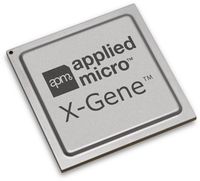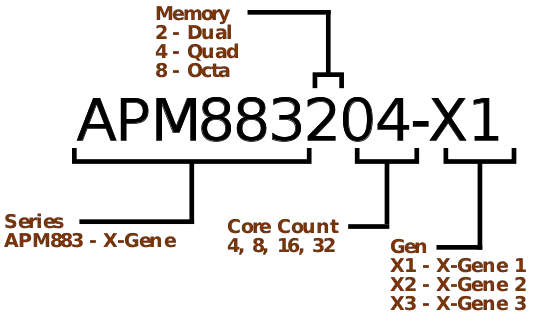(→Overview) |
(→X-Gene 1) |
||
| Line 56: | Line 56: | ||
--> | --> | ||
{{comp table start}} | {{comp table start}} | ||
| − | <table class="comptable sortable | + | <table class="comptable sortable tc2 tc3 tc7"> |
| − | {{comp table header|main| | + | {{comp table header|main|6:List of Storm-based Processors}} |
| − | {{comp table header|cols|Launched|Cores|% | + | {{comp table header|main|4:Processor|2:Memory}} |
| + | {{comp table header|cols|Launched|Cores|%Turbo|L3$|Type|Chans}} | ||
{{#ask: [[Category:microprocessor models by appliedmicro]] [[microarchitecture::Storm]] | {{#ask: [[Category:microprocessor models by appliedmicro]] [[microarchitecture::Storm]] | ||
|?full page name | |?full page name | ||
| Line 64: | Line 65: | ||
|?first launched | |?first launched | ||
|?core count | |?core count | ||
| + | |?turbo frequency#GHz | ||
|?l3$ size | |?l3$ size | ||
| − | |? | + | |?supported memory type |
|?max memory channels | |?max memory channels | ||
|format=template | |format=template | ||
|template=proc table 3 | |template=proc table 3 | ||
| − | |userparam= | + | |userparam=8 |
|mainlabel=- | |mainlabel=- | ||
}} | }} | ||
Revision as of 23:34, 25 September 2018
| X-Gene | |

| |
| Developer | AppliedMicro |
| Manufacturer | TSMC |
| Type | Microprocessors |
| Introduction | October 28, 2011 (announced) 2012 (launch) |
| ISA | ARM |
| µarch | Storm, Shadowcat, Skylark |
| Word size | 64 bit 8 octets
16 nibbles |
| Process | 40 nm 0.04 μm , 28 nm4.0e-5 mm 0.028 μm , 16 nm2.8e-5 mm 0.016 μm
1.6e-5 mm |
| Technology | CMOS |
| Clock | 2.4 GHz-3.3 GHz |
| Succession | |
| → | |
| eMAG | |
X-Gene was a family of 64-bit ARM server microprocessors designed and introduced by AppliedMicro.
Contents
Overview
X-Gene was a family of high-performance multi-core ARM microprocessors first announced by AppliedMicro in 2011. Unlike their traditional product offering, X-Gene directly targeted high-performance data center servers, a market predominantly dominated by Intel Xeon processors. AppliedMicro introduced two generations of server processors based on their own custom ARM microarchitectures - Storm and Shadowcat. Those two generations shipped a total of 25,000 units. In late 2016, MACOM acquired AppliedMicro resulting in the shelving of third-generation X-Gene based on the Skylark microarchitecture. The X-Gene intellectual property including most of the design team was eventually sold to Ampere Computing has rebranded the design and improved on it under the eMAG brand.
Naming Scheme
Members
X-Gene 1
- See also: Storm microarchitecture
First-generation of X-Gene processors were announced in October 2011 and later launched in late 2012. X-Gene 1 processors are based on the Storm microarchitecture and were fabricated on TSMC's 40 nm process. Those processors had up to four memory channels and up to eight cores operating at up to 2.4 GHz.
- Mem: up to 4 memory channels, DDR3 @ up to 1866 MT/s
- Tech: ARMv8 (ARMv8.0-A)
- I/O: 17 PCIe, SATA/SGMII, 2x SGMII/XFI, 1x RGMII
| List of Storm-based Processors | ||||||
|---|---|---|---|---|---|---|
| Processor | Memory | |||||
| Model | Launched | Cores | Turbo | L3$ | Type | Chans |
| APM883204-X1 | 2012 | 4 | 2.4 GHz 2,400 MHz 2,400,000 kHz | 4 MiB 4,096 KiB 4,194,304 B 0.00391 GiB | DDR3-1866 | 4 |
| APM883208-X1 | 2012 | 8 | 2.4 GHz 2,400 MHz 2,400,000 kHz | 8 MiB 8,192 KiB 8,388,608 B 0.00781 GiB | DDR3-1866 | 2 |
| APM883408-X1 | 2012 | 8 | 2.4 GHz 2,400 MHz 2,400,000 kHz | 8 MiB 8,192 KiB 8,388,608 B 0.00781 GiB | DDR3-1866 | 4 |
| Count: 3 | ||||||
X-Gene 2
| This section is empty; you can help add the missing info by editing this page. |
X-Gene 3
| This section is empty; you can help add the missing info by editing this page. |
See also
Bibliography
- David Schor. (February 5, 2018). "X-Gene 3 gets a second chance at Ampere with a new 32-core 16nm ARM processor".
| designer | AppliedMicro + |
| first announced | October 28, 2011 + |
| first launched | 2012 + |
| full page name | apm/x-gene + |
| instance of | microprocessor family + |
| instruction set architecture | ARM + |
| main designer | AppliedMicro + |
| manufacturer | TSMC + |
| microarchitecture | Storm +, Shadowcat + and Skylark + |
| name | X-Gene + |
| process | 40 nm (0.04 μm, 4.0e-5 mm) +, 28 nm (0.028 μm, 2.8e-5 mm) + and 16 nm (0.016 μm, 1.6e-5 mm) + |
| technology | CMOS + |
| word size | 64 bit (8 octets, 16 nibbles) + |
